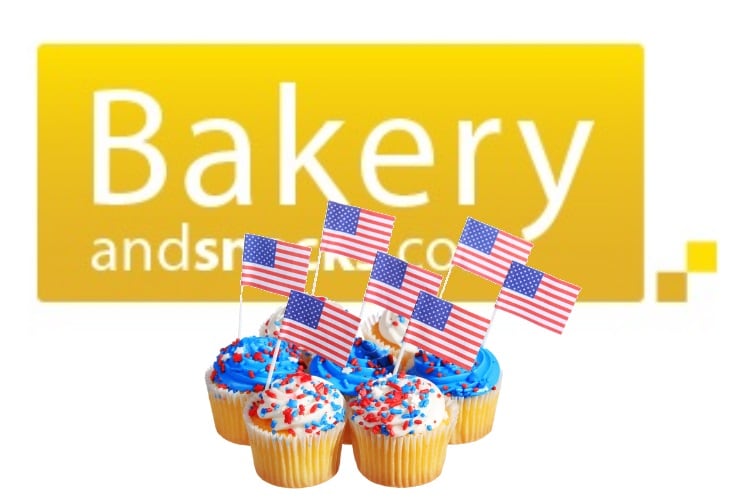When it comes to reader engagement, nothing triggers the ‘let’s see’ button more often than the encouragement of innovation, and this year, we have had loads to talk about.
The best and the brightest
Kraft Heinz introduced its second round of next generation players that it believes will shape the future of food, including Blake’s Seed Based, BRAMI, Ka-Pop! Ancient inGRAINed Snack Co, Origin Almond and Tiny Giants.
“Springboard exists to help shape the future of food, and we are confident our next class does just that,” said Kelly Reinke, Springboard Incubator lead.
Mondelēz also got in on the action, nurturing startups by tying up a collaboration with The Hatchery Chicago, a non-profit food business incubator.
According to the snack giant, the partnerships is one of several investments it is making as part of its SnackFutures program, which Tim Cofer, the company’s executive VP and chief growth officer claims will “disrupt the food industry by testing new ideas and scaling what works.
“As the world’s snacking leader, it is increasingly important for us for us to collaborate with the best and brightest talent in advancing the future of snacking,” he added.
When it comes to innovation, nothing is more impressive than solutions for hunger relief, food waste and sustainable agriculture.
For the second year, General Mills sent a shout out to young innovators across North America for their best ideas to feed the almost billion people who struggle with hunger today.
Walk the talk
A bit of playful ribing has never hurt business, and, in fact, could encourage conversation.
Which the challenges fired by two of the US’ leading snack bar producers certainly did of late.
Clif Bar fired the first round by issuing a challenge to competitor Kind Snacks to transition to organic ingredients, even adding it would ‘sweeten the deal’ by throwing in 10 tons of free organic ingredients.
However, Kind did not take it lying down and hit back about Clif Bar’s sugar content.
The battle spread to social media, with Kind posting an image of a Clif bar with the phrase ‘31% sugar’ and copy that reads ‘brown rice syrup is sugar, whether it's organic or not.’
Organic snack bar brand LivBar waded into the debate, throwing down a gauntlet of its own and challenging all bar manufacturers to move to 100% compostable wrappers.
Health rules
A recent piece that garnered a lot of reader interest was the pipping at the post of a small Florida-based better-for-you producer’s granola that vaulted past some of the biggest cereal brands in the US to grab top spot on Amazon.
Diabetic Kitchen’s Cinnamon Pecan Granola Cereal was only launched last year, but has already grown into one of the biggest cereal brands in the US.
The founders believe this is linked to the dramatic rise in the number of diabetics, a disease closely related to the exploding obesity epidemic.
On the topic of breakfast cereals, Honorata Jarocka, senior food and drink analyst at Mintel, told BakeryandSnacks the US led innovation activity in the global breakfast cereal category throughout 2018, with a 9% share of all launches.
“Cold cereals represented a bigger portion of NPD compared with hot varieties, accounting for 74%.
“The most commonly used claim categories were ‘suitable for’ - including kosher, gluten-free, vegan, vegetarian and halal products - and ‘natural’ claims - including wholegrain, GMO-free, no additives/preservatives, organic and all-natural credentials,” she said.
Disruptive brands also experimented with other innovation strategies to stay ahead of the pack.
“One interesting example is Kellogg’s Hi! Happy Inside Cereal for Digestive Wellness, which features the holy trifecta of gut health, i.e., prebiotics, probiotics and fiber.
“Another tactic worth noting, beyond developing gut microbiome-friendly cereals, is offering energy-boosting recipes. In mid-2018, Clif Bar introduced Energy Granola, which claims to ‘deliver sustained energy for adventures big and small.’
“Indeed, in the five years to December 2018, there was an increase from 4% to 9% in the number of US launches with overt ‘energy’ claims,” said Jarocka.
To eat or not to eat?
Staying within the theme of breakfast cereals, a study that pinged the media waves suggested that preschoolers who watch televisions advertisements for breakfast cereals consume more of the product.
The study – published in the American Journal of Preventive Medicine – focused on 10 cereal brands, including General Mills’ Cocoa Puffs, Lucky Charms, Honey-Nut Cheerios, Cinnamon Toast Crunch, Reese’s Puffs and Trix; Kellogg’s Froot Loops and Frosted Flakes; and Fruity Pebbles and Cocoa Pebbles from Post.
General Mills responded by noting the numbers cited in the study were ‘significantly inflated and out of date’ and children who frequently consume cereal – pre-sweetened or not – are less likely to be overweight than those who do not.
Finally, BakeryandSnacks has had some fun this year by reporting on the 100th anniversary of the Hostess cupcake, Pop Tart’s presidential run and the cornucopia of exciting new products in the bakery, snacks and cereal categories.
Happy reading.


